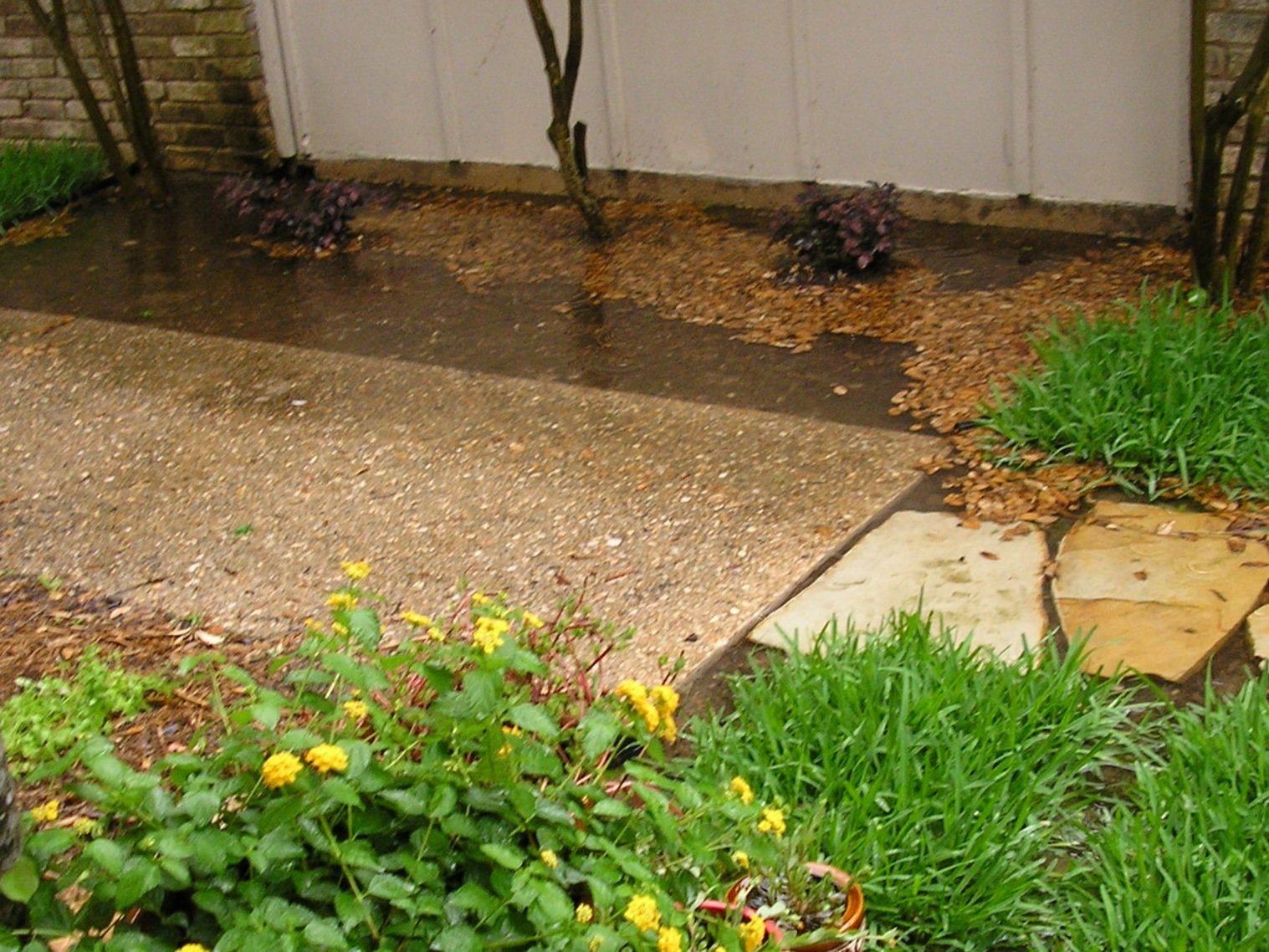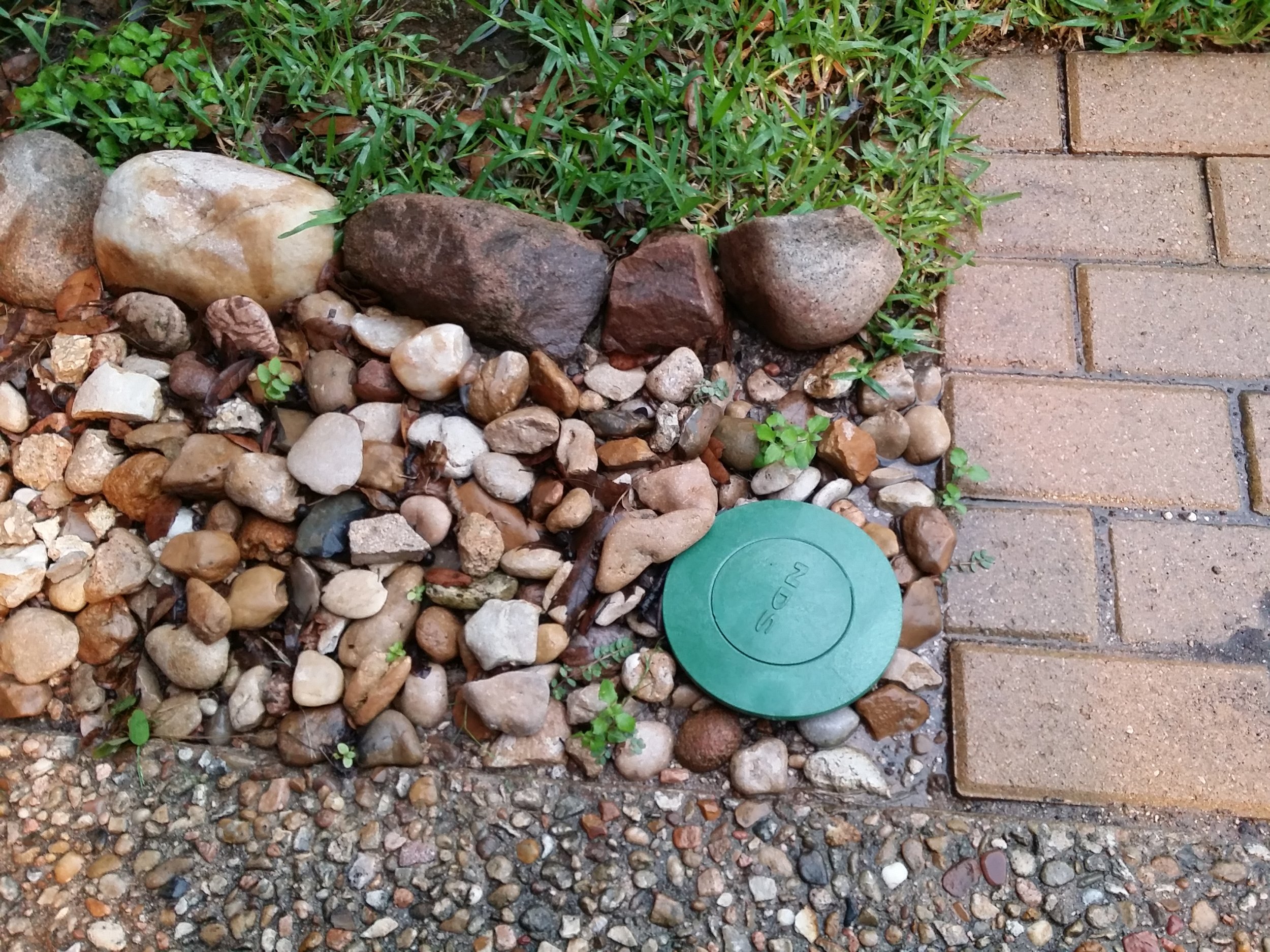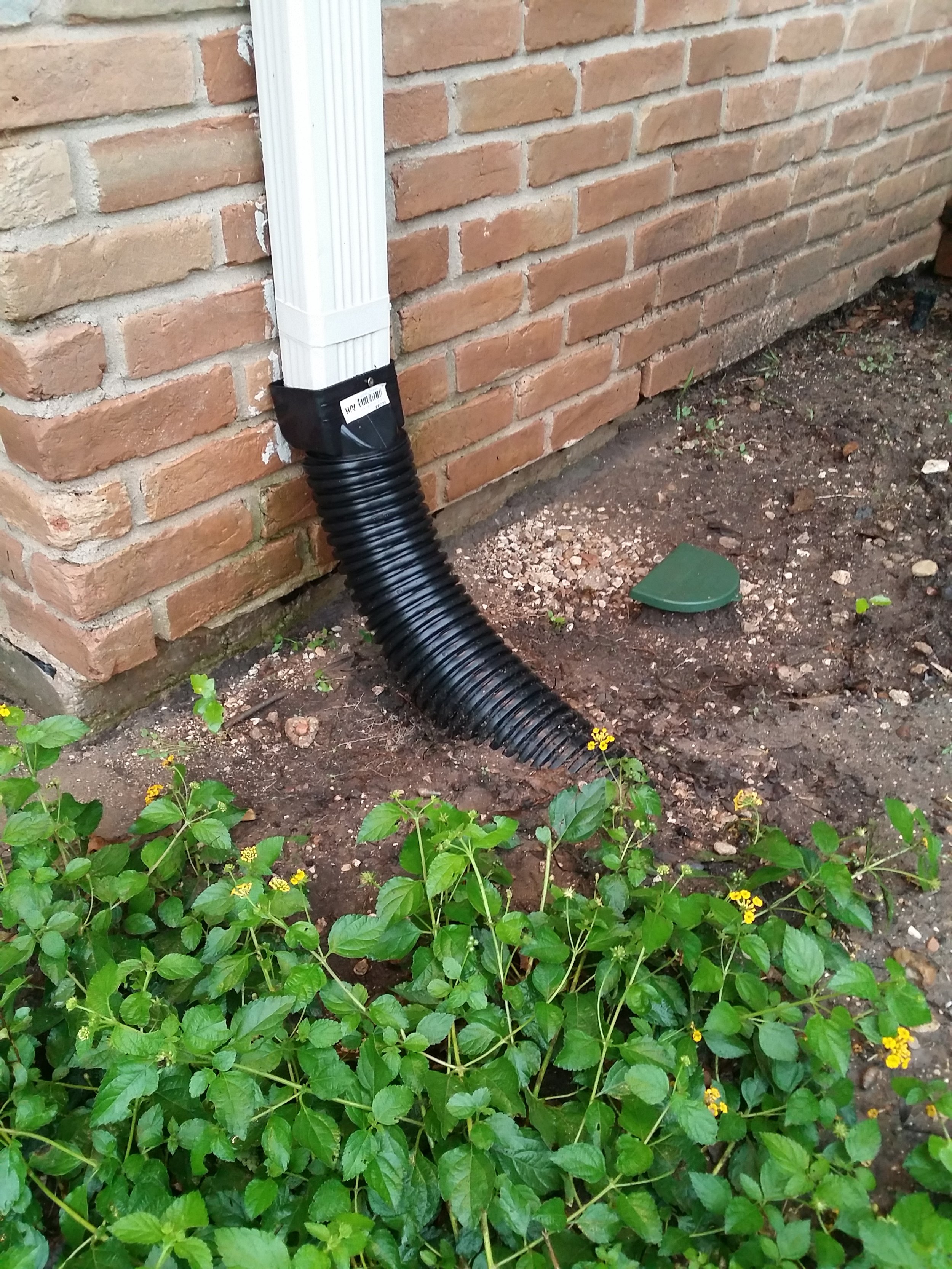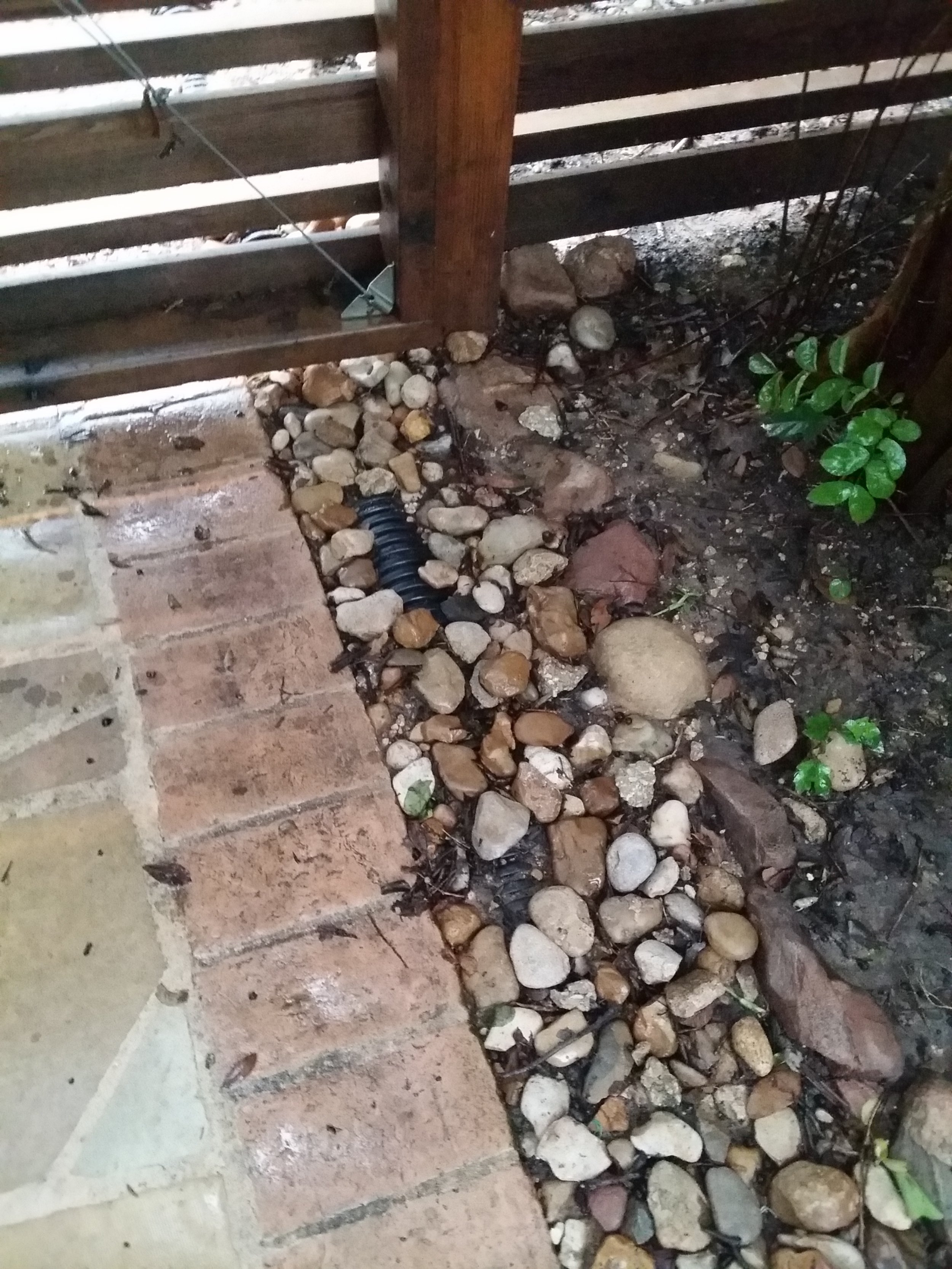It has been raining cats and dogs over the past couple of weeks in Austin, totaling 9.8" of rainfall just in the Bull Creek watershed. Last Tuesday, we got 4.76" of rainfall. That is about how much is normal average for the entire month of May, our wettest month. And it all came down overnight. All the low water crossings in the belly of the watershed were flooded, with water gushing over the roads for well over 24 hours. I regularly check http://www.atxfloods.com/ for updates.
I love the rain. I love the bright green clean look that is a result of a good shower. I love cloudy days as much as I love blue skies. After the drought we've had since 2011, you probably love it too. And if you harvest rainwater as your sole source of water supply, you are probably jumping with joy, singing "let it rain". But if your site has drainage issues, you are probably worried, and thinking "rain, rain, go away". Whether it is a flat lot or there is topography (i.e. slope, as is common in some parts of Austin and the hill country), site water management is critical for the building's durability and worry-free home-ownership.
I used to worry. My first house was a garden-home with a yard that had all the right ingredients for a flooding recipe. It was built in the late 70's in a zero-lot-line development, after the whole area was razed to the ground and compacted with caliche (crushed limestone). Although a good base for roads and driveways, and a cheap stabilizer for concrete foundation, caliche is bad for ground water seepage. (And gardening! Hardly ideal for a garden house! The yard had about 4"-6" of soil before you hit caliche. Needless to say, it wasn't a very lush garden. Or you had to work hard for it. Of course, many trees and hardy plants have grown in the neighborhood over the last 30 years.) Adding to the nonporous nature of the soil, the yard was flat as a pancake, and locked in between adjacent houses and their yards. Hint: A depressed, flat, impervious area, bound on all sides is sometimes called a pond! Let me just say, after having owned this house, "courtyards" have lost all their appeal.
When it rained, all the water from my roof and the neighbors' roofs would pour into the yard. Roof runoff was (and almost always is) by far the biggest contributor of water. Runoff from the patio and entry walkway was the second. All this water would collect in my "pond" to a depth of 6" to 8" and then start creeping into my garage, and soon after, my neighbor's house. You see, the lawn in front of the entry gate created a small berm, that trapped the water in the yard, preventing it from draining into the street. The whole neighborhood has grading and drainage issues. In a really heavy downpour, the cul-de-sac would collect so much storm-water that the street gutters would fill up to the curb and flood the sidewalk.
I had to fix it.
Our HOA (Home Owner's Association) wanted us to build a concrete flume along the side of the property. In my estimation, the flume would only serve as a ditch for water to collect and stagnate against the neighbor’s foundation till the rain subsided. This was the only predictable outcome as the elevation of the flume would be lower than that of adjacent grade and the street it was supposed to drain towards.
Instead, I took a more comprehensive approach. First line of defense was to carry the roof runoff away from the yard and discharge it at the street. I sized the roof gutters and downspouts for each section of roof area. I replaced my dinky 4" gutters (which overflowed all the time) with 5" gutters that were big enough to handle the volume of water running off the roof surface. Then I added a few downspouts. I connected the downspouts to corrugated PVC pipes that were buried below grade, going out to the street. I installed clean-outs at the transition between the downspout and the pipe. (No, I did not get leaf covers for the gutters, as they were beyond my budget at the time). Because of the lack of slope, I had to do pop-up drains at the end of the lines.It works like a charm. In a rain event, the water pressure in the underground line forces it to pop-up and spill over at the street.
To handle the surface water at the grade level, I installed a french drain all along the length of the property from the back corner to the front, also tied to a pop-up drain. The HOA cut a swale into the berm at the front lawn. They didn't want to spend the money to pave the swale, but had to come back later and do it anyway, as a grassy swale is not a very effective one.
And voila, that fixed it. 2" of rain in an hour and no flooding.
Now, I just need to keep my gutters clean. Ugh! I should have invested in the leaf covers.
Cheers,
Sharon.









